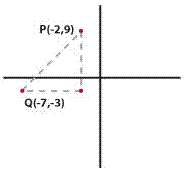Events & Promotions
|
|

GMAT Club Daily Prep
Thank you for using the timer - this advanced tool can estimate your performance and suggest more practice questions. We have subscribed you to Daily Prep Questions via email.
Customized
for You
Track
Your Progress
Practice
Pays
Not interested in getting valuable practice questions and articles delivered to your email? No problem, unsubscribe here.
- Nov 22
11:00 AM IST
-01:00 PM IST
Do RC/MSR passages scare you? e-GMAT is conducting a masterclass to help you learn – Learn effective reading strategies Tackle difficult RC & MSR with confidence Excel in timed test environment - Nov 23
11:00 AM IST
-01:00 PM IST
Attend this free GMAT Algebra Webinar and learn how to master the most challenging Inequalities and Absolute Value problems with ease. - Nov 25
10:00 AM EST
-11:00 AM EST
Prefer video-based learning? The Target Test Prep OnDemand course is a one-of-a-kind video masterclass featuring 400 hours of lecture-style teaching by Scott Woodbury-Stewart, founder of Target Test Prep and one of the most accomplished GMAT instructors.
Kudos
Bookmarks
A
Be sure to select an answer first to save it in the Error Log before revealing the correct answer (OA)!
Difficulty:
 75%
(hard)
75%
(hard)
Question Stats:
59% (02:32) correct 41%
(02:26)
wrong
41%
(02:26)
wrong  based on 646
sessions
based on 646
sessions
History
Date
Time
Result
Not Attempted Yet
The (x, y) coordinates of points P and Q are (-2, 9) and (-7, -3), respectively. The height of equilateral triangle XYZ is the same as the length of line segment PQ. What is the area of triangle XYZ?
A. 169/√3
B. 84.5
C. 75√3
D. 169√3 /4
E. 225√3 /4
Attachment:
Triangle.PNG [ 2.68 KiB | Viewed 32553 times ]
Attachment:
Triangle.PNG [ 2.68 KiB | Viewed 32553 times ]
Length of PQ = 13 i.e. this is 5:12:13 Right angle triangle.
We are told that this length (13) is equal to the height of the equilateral triangle XYZ. An equilateral triangle can be cut into two 30-60-90 triangles, where the height of the equilateral triangle is equal to the long leg of each 30-60-90 triangle. We know that the height of XYZ is 13 so the long leg of each 30-60-90 triangle is equal to 13. So the sides of the 30:60:90 triangle are x:x\(\sqrt{3}\):2x.
Now here I am stuck. What will be the three sides of a triangle?
Kudos
Bookmarks
The (x, y) coordinates of points P and Q are (-2, 9) and (-7, -3), respectively. The height of equilateral triangle XYZ is the same as the length of line segment PQ. What is the area of triangle XYZ?
A. 169/√3
B. 84.5
C. 75√3
D. 169√3 /4
E. 225√3 /4

The formula to calculate the distance between two points \((x_1,y_1)\) and \((x_2,y_2)\) is \(d=\sqrt{(x_1-x_2)^2+(y_1-y_2)^2}\).
So the distance between P and Q is \(d=\sqrt{(-2+7)^2+(9+3)^2}=13\). (Else you can find the length of PQ by realizing that PQ is a hypotenuse of 5:12:13 right triangle)
So we know that the height in equilateral triangle XYZ equals to 13: \(height=13\)
Now, since the height of the equilateral triangle divides it into two 30-60-90 right triangles with the ratio of the sides \(1:\sqrt{3}:2\) then height becomes the leg opposite 60 degrees angle and the hypotenuse, which is the side of an equilateral triangle can be found from the ratio: \(\frac{height}{side}=\frac{\sqrt{3}}{2}\) --> \(side=\frac{26}{\sqrt{3}}\).
Next, \(area_{equilateral}=side^2*\frac{\sqrt{3}}{4}=\frac{169}{\sqrt{3}}\). (Else, \(area_{equilateral}=\frac{1}{2}*height*side=\frac{1}{2}*13*\frac{26}{\sqrt{3}}=\frac{169}{\sqrt{3}}\))
Answer: A.
Check this: https://gmatclub.com/forum/math-triangles-87197.html

Triangle.PNG [ 2.68 KiB | Viewed 30513 times ]
A. 169/√3
B. 84.5
C. 75√3
D. 169√3 /4
E. 225√3 /4
The formula to calculate the distance between two points \((x_1,y_1)\) and \((x_2,y_2)\) is \(d=\sqrt{(x_1-x_2)^2+(y_1-y_2)^2}\).
So the distance between P and Q is \(d=\sqrt{(-2+7)^2+(9+3)^2}=13\). (Else you can find the length of PQ by realizing that PQ is a hypotenuse of 5:12:13 right triangle)
So we know that the height in equilateral triangle XYZ equals to 13: \(height=13\)
Now, since the height of the equilateral triangle divides it into two 30-60-90 right triangles with the ratio of the sides \(1:\sqrt{3}:2\) then height becomes the leg opposite 60 degrees angle and the hypotenuse, which is the side of an equilateral triangle can be found from the ratio: \(\frac{height}{side}=\frac{\sqrt{3}}{2}\) --> \(side=\frac{26}{\sqrt{3}}\).
Next, \(area_{equilateral}=side^2*\frac{\sqrt{3}}{4}=\frac{169}{\sqrt{3}}\). (Else, \(area_{equilateral}=\frac{1}{2}*height*side=\frac{1}{2}*13*\frac{26}{\sqrt{3}}=\frac{169}{\sqrt{3}}\))
Answer: A.
Check this: https://gmatclub.com/forum/math-triangles-87197.html
Attachment:
Triangle.PNG [ 2.68 KiB | Viewed 30513 times ]
General Discussion
Kudos
Bookmarks
This is where I always get confused:
Height becomes the leg opposite 60 degrees angle and the hypotenuse, which is the side of an equilateral triangle can be found from the ratio: \(\frac{height}{side}=\frac{\sqrt{3}}{2}\) --> \(side=\frac{26}{\sqrt{3}}\).
How come we decide that it will be the leg opposite to 60 degrees angle?
I am fine with the rest, but struggles in the above concept.
Answer: A.
Check this: math-triangles-87197.html[/quote]
Height becomes the leg opposite 60 degrees angle and the hypotenuse, which is the side of an equilateral triangle can be found from the ratio: \(\frac{height}{side}=\frac{\sqrt{3}}{2}\) --> \(side=\frac{26}{\sqrt{3}}\).
How come we decide that it will be the leg opposite to 60 degrees angle?
I am fine with the rest, but struggles in the above concept.
Answer: A.
Check this: math-triangles-87197.html[/quote]












